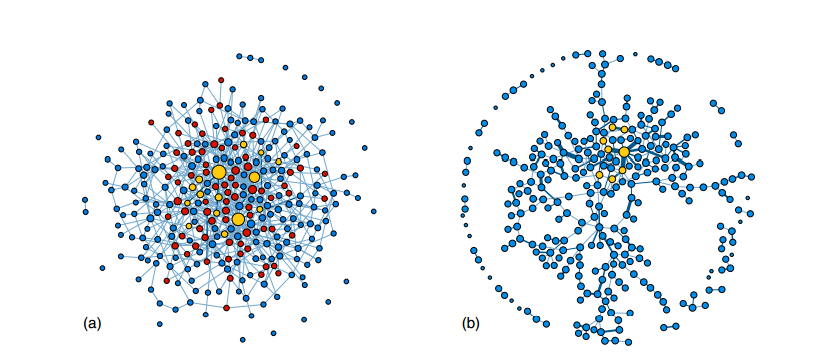How Strong Social Ties Hinder the Spread of Rumours
In 1973, the sociologist Mark Granovetter published a paper called “The strength of weak ties” in which he put forward the idea that information largely spreads through society between individuals with weak connections rather than strong ties.

His evidence came from asking a few hundred people how they found their jobs. It turned out that the most common route was through vague acquaintances rather than through strong friends. Since then, Granovetter’s paper has become one of the most highly cited and influential in the field of social network theory.
But what of the role of strong ties? Today, Marton Karsai and pals at Northeastern University in Boston show that strong ties can actually hinder the spread of information through a network.
These guys looked at over 600 million time-stamped mobile phone calls between 6 million people over six months in an unnamed European country. The analysis of these kinds of datasets has become common in recent years but Karsai and co have a new trick up their sleeves.
While most work in the past has looked at the connections between individuals averaged over time, Karsai and co looked in detail at the way an individual’s connections–that person’s egonet–evolved over time. That’s important because it can reveal important characteristics about social interactions that would otherwise be lost. “The concurrency, and time ordering of interactions, even if the social network contains stable relationships, are crucial and may have considerable effects,” they say.
Having characterised the way egonets evolve, they then simulated this behaviour by creating a network of artificial agents that make connections with each other in the same way. Finally, they examined the way rumours spread through such a network to study the role that strong and weak ties play as the network changes over time.
The results are somewhat counterintuitive. It’s easy to imagine that rumours arrive via people you have the strongest ties with. But Karsai and co say this does not appear to be true. Instead, strong ties tend to hinder the spread of rumours because they confine information to a group that largely communicates with each other.
So not only do weak ties promote the spread of rumours, strong ties tend to hinder it.
What’s interesting about this result is that it only emerges when the time-varying nature of the network becomes visible. “The presented results underline the subtleties inherent to the analysis of dynamical processes in time-varying networks,” say Karsai and co.
So it’ll be fascinating to see what other insights emerge from this kind of work.
Ref: arxiv.org/abs/1303.5966: The Emergence And Role Of Strong Ties In Time-Varying Communication Networks
Keep Reading
Most Popular
Large language models can do jaw-dropping things. But nobody knows exactly why.
And that's a problem. Figuring it out is one of the biggest scientific puzzles of our time and a crucial step towards controlling more powerful future models.
How scientists traced a mysterious covid case back to six toilets
When wastewater surveillance turns into a hunt for a single infected individual, the ethics get tricky.
The problem with plug-in hybrids? Their drivers.
Plug-in hybrids are often sold as a transition to EVs, but new data from Europe shows we’re still underestimating the emissions they produce.
Stay connected
Get the latest updates from
MIT Technology Review
Discover special offers, top stories, upcoming events, and more.